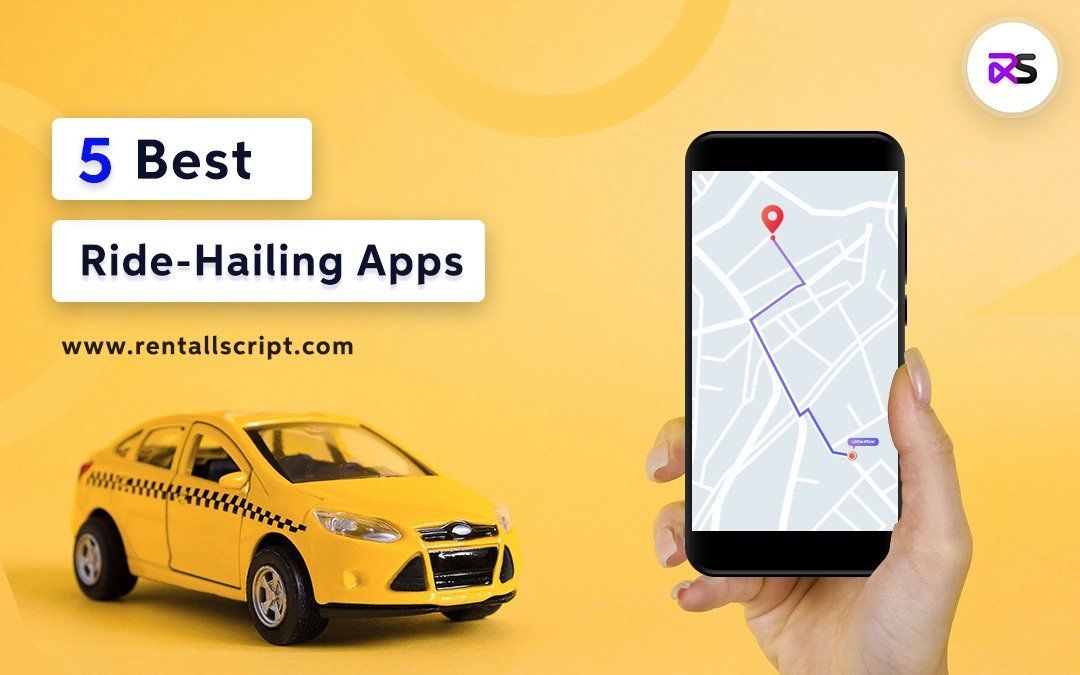
Here’s the list of best ride-hailing apps in 2023
Here are the top 5 trending ride-hailing apps you have to try once. You get to know each company's revenue model and how they found it.
If you need to reach anywhere in the city, all you have to do is book a taxi through the app on your mobile. Mobile apps have made ride booking easier than ever.
You can also pre-book a ride, through ride-hailing apps, in advance to reach an important meeting or place.
So, here in this blog, we discuss the top 5 best apps trending in the ride-hailing industry. These apps are well-known and are running successfully around the world.
Let’s begin.
1. Lyft
It was founded in 2012 by Logan Green and John Zimmer. The Lyft app considered the 2nd biggest ride-hailing app after Uber.
At first, the company started as a long-distance ride-sharing app for college students. Soon the company shifted its focus to provide a short-distanced ride within the city.
It was not turning back. The company established its service in many cities in the US. Today it offers services like bike-sharing, scooter sharing, and self-driving mobiles to customers.
How does the app work?
The riders enter the destination and choose the ride type – Lyft, Shared, Lux, or wait. They confirm the pick-up location and request a ride. The app searches for nearby drivers to assign a ride.
To use the service, you can download the app from the PlayStore and AppStore.
Revenue model
Lyft charges a service fee per ride. Apart from service fees, they charge a Lyft Platform fee that differs across different cities.
You need the best software solution to start a business like Lyft and compete in this competitive market.
2. Ola cabs
Ola is a ride-hailing app, initially started in India in 2010. Now, the company has extended its service to Australia, New Zealand, and the UK. Through Ola, you can book auto, any premium car, and bikes.
How does the app work?
The app is somewhat similar to Uber. The user enters the pick-up and drop locations, selects a vehicle category from the given options, chooses their mode of payment, and requests a ride.
The app connects the user to a nearby driver. When the driver reaches the pick-up point, the user shares the OTP, received through push notification when the booking gets confirmed, to precisely calculate the ride fare.
Revenue model
The app charges a commission for each ride within 15% to 30%. The service fee differs from each city and supply-demand.
3. Grab
Grab is a ride-hailing app, started by Anthony Tan and Tan Hooi Ling, headquartered in Singapore in 2012.
The company is currently operating in Southeast Asian countries like Singapore, Malaysia, Cambodia, Indonesia, Myanmar, Philippines, Thailand, Vietnam, and Japan.
It has become the goto app for hailing a taxi in the Southeast Asia region.
The idea was born after seeing the success of Uber in the US by Anthony Tan. He knew this idea would be successful if he made it first in the south Asian market.
How does the app work?
The app assigns the rides to the customers by matching to a driver nearer to the pick-up location.
Revenue model
Grab changes the service fee at any time – depending upon the current market and profit. Initially, they charged around US$0.20 for each ride, which is very low compared to other competitors.
4. Bolt
Bolt, a replica of the Uber, was launched by Markus Villig in 2013. It was first started in Estonia and Tallinn to create an easy way to book a taxi during peak hours and weekends. Soon, the business rapidly grew and many customers started using the app.
By 2014, the company had started its service in other cities as well. In 2018, the company launched its first dockless electric scooter in Paris and subsequently in other cities as well.
Now, the company has started the on-demand food delivery business known as Bolt Food and has plans to launch in other European cities as well.
How does the app work?
The customers enter the pick-up and drop location, select the mode of payment, and request the ride on the platform. The app searches for the nearby drivers to assign a ride.
Revenue model
Bolt charges a 15% service fee from the total fare from the drivers.
5. Gett
Gett is a ride-hailing app, started in Israel by Shahar Waiser and Roi More. It was founded in 2010 by launching the beta version of the app in the Hebrew language operating in Tel Aviv city.
The business took off successfully. Many users signed up and realized how convenient the app is. Shortly, they launched the service in London, Moscow, and New York City.
How does the app work?
First, the app asks the users to choose a ride at the top of the screen and use the pin to set the pick-up location.
On the following page, the users choose the time for pick-up, enters the destination address, payment method – cash or card. They request for a taxi on the app. Drivers get assigned who are near to the user location.
Revenue model
Gett’s revenue model differs from city to city. The company follows any one of these revenue models – they charge a monthly fee from drivers, take a small service fee from each ride, or charge fee for corporate rides.
Inspired to start a ride-hailing business?
All these companies have started the ride-hailing business in their own country/locality to change the way we moved within the city. Entrepreneurs identified the common problem we faced in hiring a cab during weekends and peak hours.
With the advent of the smartphone and faster internet connectivity, booking a ride through an on-demand app made simple, affordable, and much quicker.
If you are an entrepreneur wanting to build a ride-hailing app to start a business in your locality, you can go for an Uber clone app solution provided by on-demand app development companies.
One of the robust solutions is Wooberly.
Wooberly comes with the Rider and Driver app and an admin panel for the platform owners.
You can prefer Wooberly for it is
- Technology – Built with Flutter
- Embellished with the key features.
- Perfect for building a minimum viable product
- Scalability
- 100% customizable
For more details, get in touch with us at [email protected].




